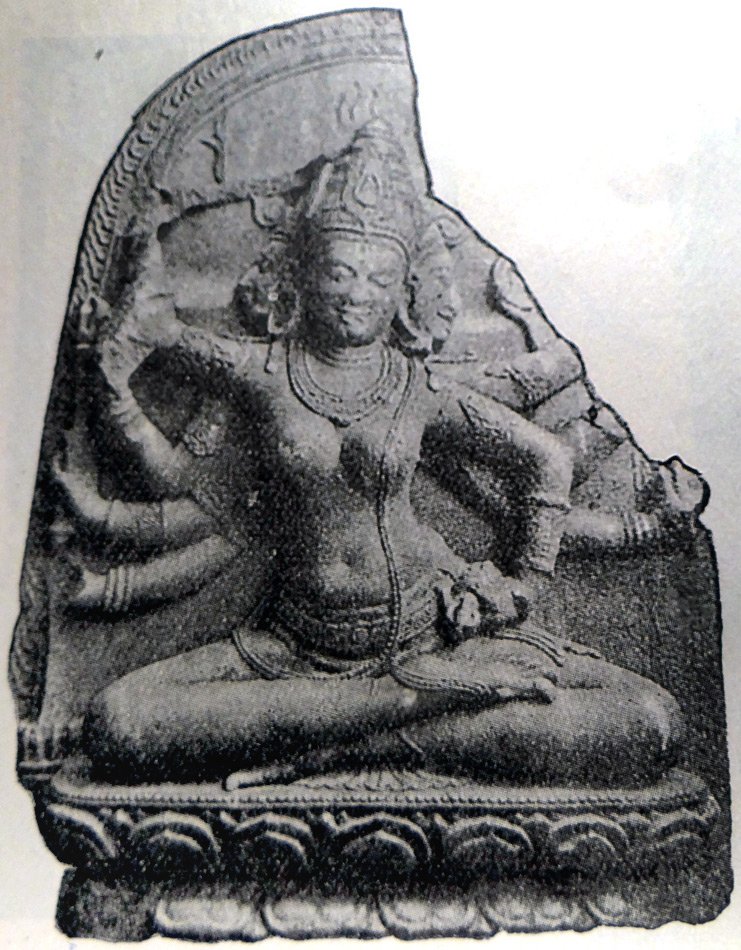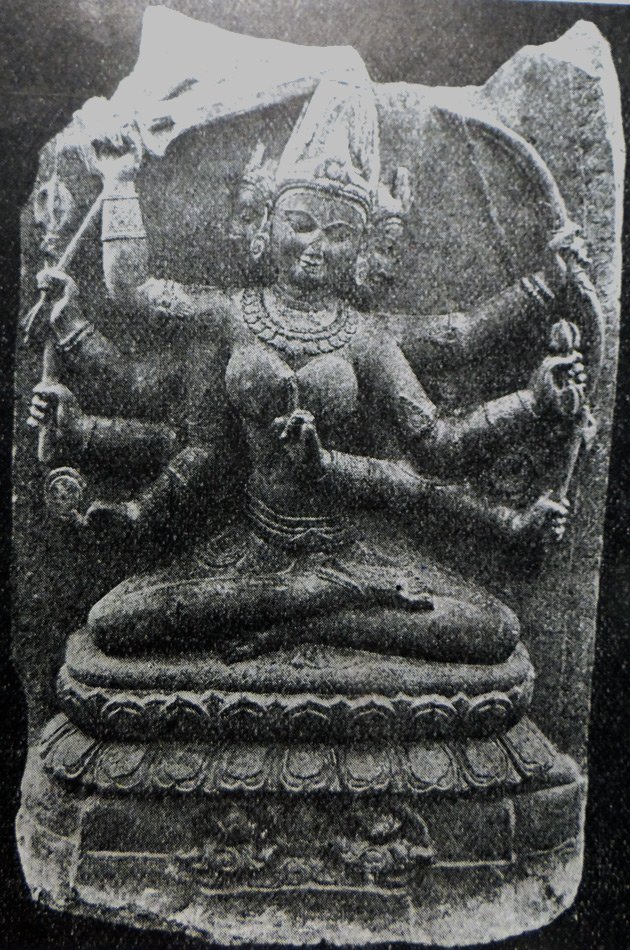The Indian Buddhist Iconography
by Benoytosh Bhattachacharyya | 1958 | 51,392 words | ISBN-10: 8173053138 | ISBN-13: 9788173053139
This page contains an iconography image of Emanations of Ratnasambhava: Mahapratisara and represents figure 184-185 of the book Indian Buddhist Iconography, based on extracts of the Sadhanamala English translation. These plates and illustrations represent either photographs of sculptures or line-drawing reproductions of paintings or other representations of Buddhist artwork.
Figure 184-185 - Emanations of Ratnasambhava: Mahāpratisarā
 Fig. 184: Mahāpratisarā (Dacca Sāhitya Pariṣat) |
 Fig. 185: Mahāpratisarā (Dacca Museum) |
Varieties:
1. Three-Faced, Ten-Armed;
2. Four-Faced, Eight-Armed.
Mahāpratisarā is the principal goddess in the Pañcarakṣā group, and her worship is widely prevalent amongst the Tantric Buddhists. She is represented either singly or in a Maṇḍala in the company of four other Pañcarakṣā deities. She is generally yellow when worshipped independently, and white when worshipped in the Maṇḍala of the five goddesses. She may be represented with four faces and eight arms, or with three faces and ten arms, in accordance with the Sādhanas, but in actual representations she may have three faces and eight arms. The form with three faces and eight arms, is said to bear the image of Ratnasambhava on the crown, and the other yellow form may also be assigned to this Dhyāni Buddha.
The form with four faces and eight arms is described under the five Rakṣā deities. But there is another form which is worshipped independently, and which is almost identical with the preceeding one, except that here she is endowed with four faces and eight arms. The principal face is yellow, the right white, the left red, and the face behind blue. She carries in her four right hands the sword, the Cakra, the Triśūla and the arrow, and in the four left the Paraśu, the bow, the noose and the Vajra.
Two photographs (Figs. 184, 185) represent this form of the goddess, and these tally with the Sādhana in all other respects except that they have only three faces instead of four.
The goddess is popular in Tibet and China.
